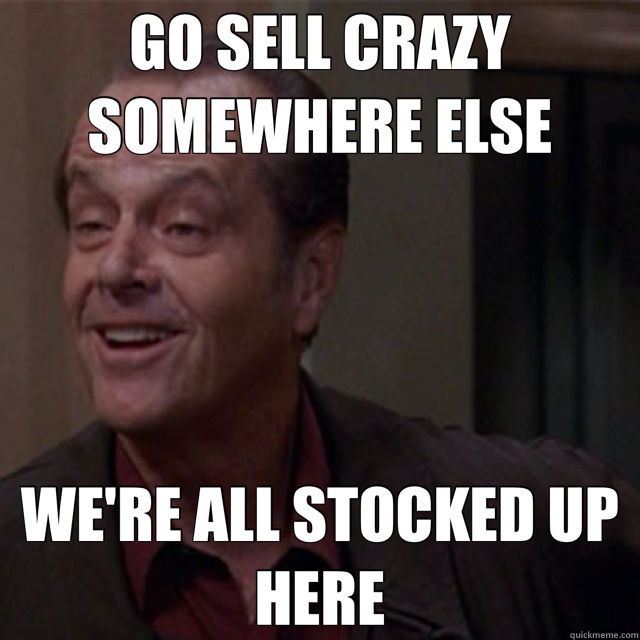
An assertion that the Amtrak Downeaster excursion on the imaginary axis is a $250 million experiment in legacy transportation is credible and supportable with facts on the public record.
Even more credible are these passages from the Maine Central Railroad 1959 Annual Report:


“….conclusively destroying any concept of public necessity.” We love that phraseology, from the year of our High School graduation, when common sense and rational thought were more in fashion than they are now. Sadly, a preference for such things is ‘so yesterday.’
Regardless, we thought we’d bring you this latest ‘draft operating budget’ from NNEPRA, the operator of the Amtrak Downeaster. It’s in two sections because of production issues, which offer us a chance to insert comments along the way.

The budget segment just above shows (in the highlighted entries) that NNEPRA projects operating revenues for the current fiscal year to be less than the projected operating revenues for the prior fiscal year. Specifically, projected ticket sales are down by $300,000. They can’t blame this on harsh winters and other deflections. These are PROJECTIONS.
On the other hand, Amtrak is raising their “rental fees” by $2 million, or 17%! This is a clear indicator of Amtrak fiscal challenges nation-wide, and it’s sure to continue as the political and economic underpinnings of the Amtrak pipe dream erode.
“If something cannot go on forever, it will stop" is known as Herbert Stein’s Law. Unless, of course, you’re able to print as much money as you need, like they do in Washington.
Moving on:

We take issue with the term “Total Capital and Operating Expense.” Nothing in the way of capital expense is shown in this budget document.

Not even the cost of the Brunswick MLF. Nor are peripheral operating costs, such as the cost of the Brunswick Taxi contract (~$200,000 per year), or the municipal expenses for operating/maintaining local stations and “visitors centers.” This must have been an oversight. Or perhaps an inadvertent error in transparency. Thank you, Dr. Gruber.
Ignoring those minor ‘clerical errors’ for the moment, we can’t help but notice that the operating subsidy required for the current year is up by 23% over the actual amount last year, or nearly $2.5 million. Wow; sounds like awards and bonuses are called for all around!
We also note that in line 3, state match, there is no mention of New Hampshire or Massachusetts chipping in, even though nearly half of Downeaster ridership occurs exclusively within those states. Can we all take a deduction for subsidizing their train riders; this is an act of ‘charity,’ is it not?
Let’s review the takeaways from the foregoing.


We recognize that some members of our vast readership, and in particular, the ladies of AAB, are unable to grasp the magnitude of numbers like $12.9 million, since the largest number they encounter in an average day is the price of a double decaf latte with extra cinnamon and vanilla syrup and three cherries at a trendy local coffee house.

We’ll help them this way. $12.9 million is $1.075 million per month. That equates to $35,833 (plus change) per day, or $1493 per hour. All year round, every day, every hour.
So what; that’s only $25 a minute or so. What’s the big deal?
Here’s another way to think of it. Brunswick accounts for roughly 7% of Downeaster ridership, so on a pro-rata basis, we account for $903,000 of this year’s operating deficit. That’s more than $17,000 per week and nearly $2,500 per day. To carry 17 riders on an average train. Not including local subsidy costs.
We trust Our Ladies of Brunswick will write once they have a chance to absorb these ‘figures,’ and construct a counter-narrative based on whatever it is they consume to dream up their fanciful ‘community-based’ justifications for throwing public money down a public rat hole.
We won’t bother you tonight with our estimate of $250 million in speculation on the Downeaster. Speculation is the right word, and any time you hear someone use the word ‘investment,’ tell them to talk to your hand, if you can find it in your heart to do that. As for us, we’d use a slightly less civil word than hand.
We won’t tell you about the $75 million or so on basic Downeaster start up; the $75 million or so on extending service north of Portland; or the $100 million or so in annual operating subsidies so far.
But we do want to make sure we’ve got things straight, if you’ll forgive the use of a ‘trigger’ word. We mean no micro-aggression.
Ticket revenue declining by 3%, and rental costs for train equipment increasing by 17%. Taxpayer subsidy demand up by 23%.

And you want us to believe this is a sustainable enterprise model? What do you think we are? Gullible taxpayers?

Oh wait; that’s EXACTLY what we are, isn’t it?




![[Flying_Yankee_Matchbook_ad_derivativ.jpg]](https://blogger.googleusercontent.com/img/b/R29vZ2xl/AVvXsEhIbOCZK4X9_QJ28DKX-vvtFAh-KyuVVu8-la1x4H6LLbXSIFEblINNHasfeSVqMP0K4CxwKl63RZhlUrbiVs0zfJwGNkTAoLSJhNKPBJb1ZTqLHRru8ULQzwCnRMlFNjWehWqH5tQw8fnL/s1600/Flying_Yankee_Matchbook_ad_derivativ.jpg)
























